I would like to see the house also. Nice looking place.
My Latest Project - Texas Dog Run Restoration
20,494 Views |
130 Replies |
Last: 13 yr ago by Stoney
quote:
in order to preserve green belts in my area before developers enter the fray
I hope you are successful. Like the thread.
A Few House Pics:
The Pool (at sunset in winter in the first shot):
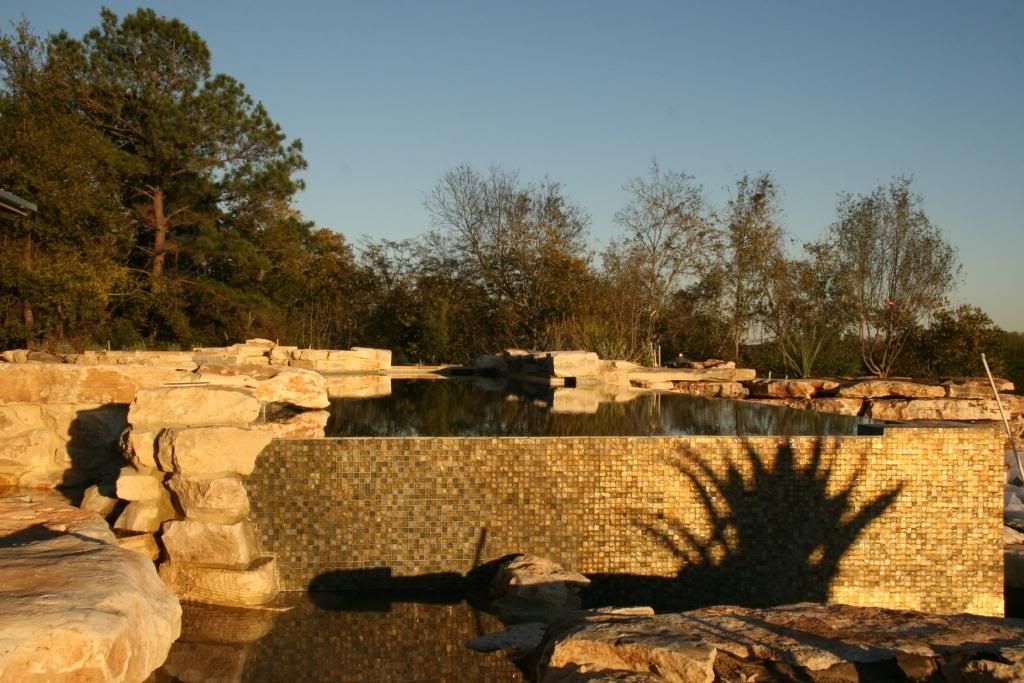
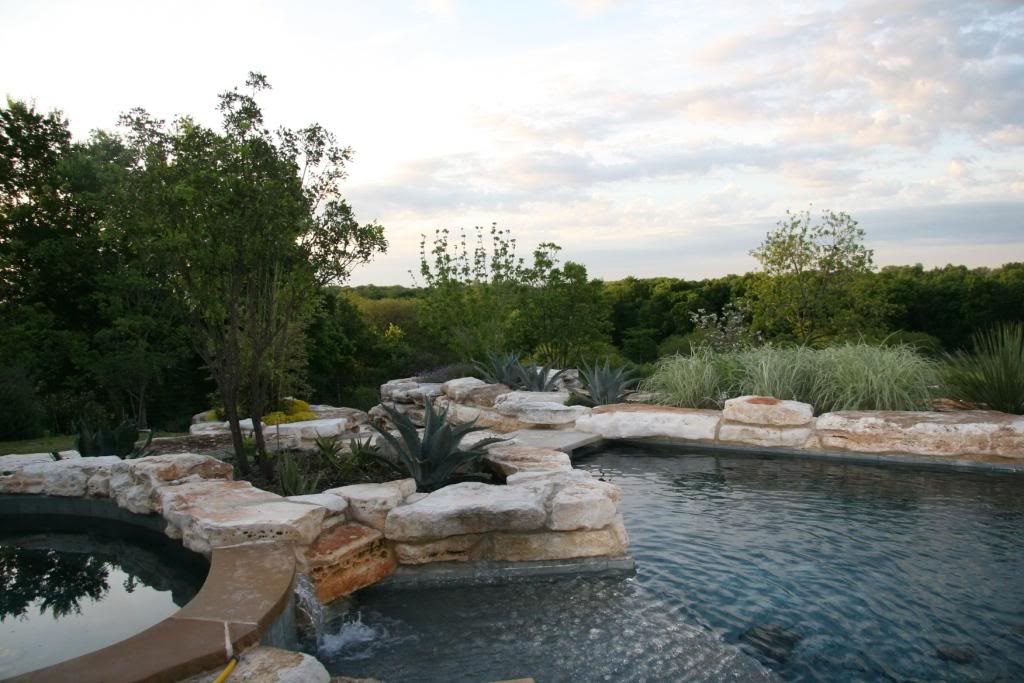
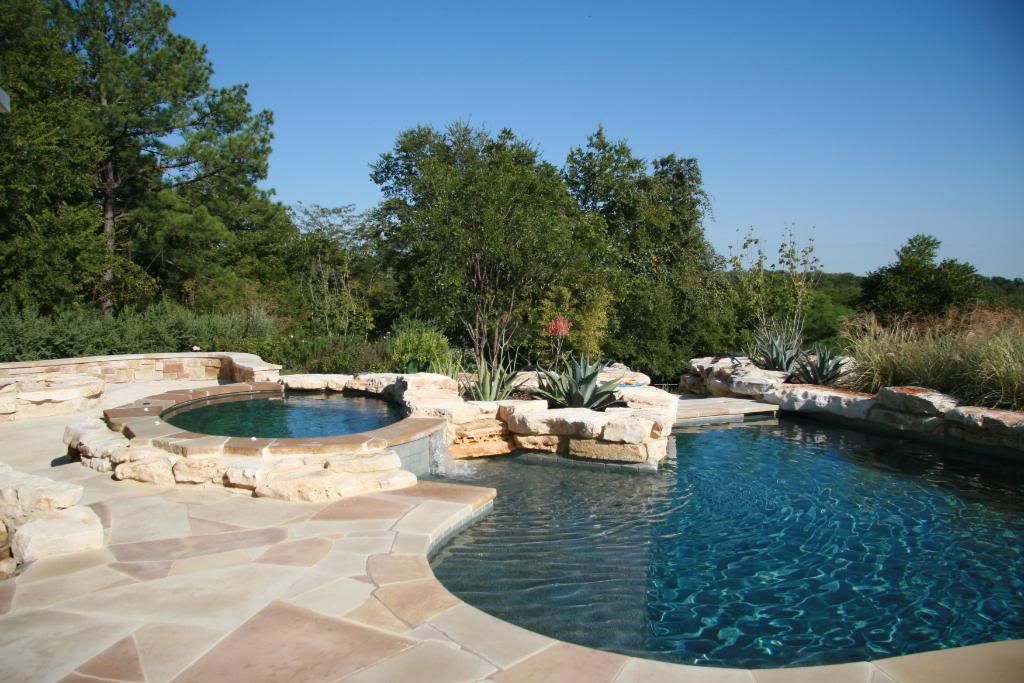
House:
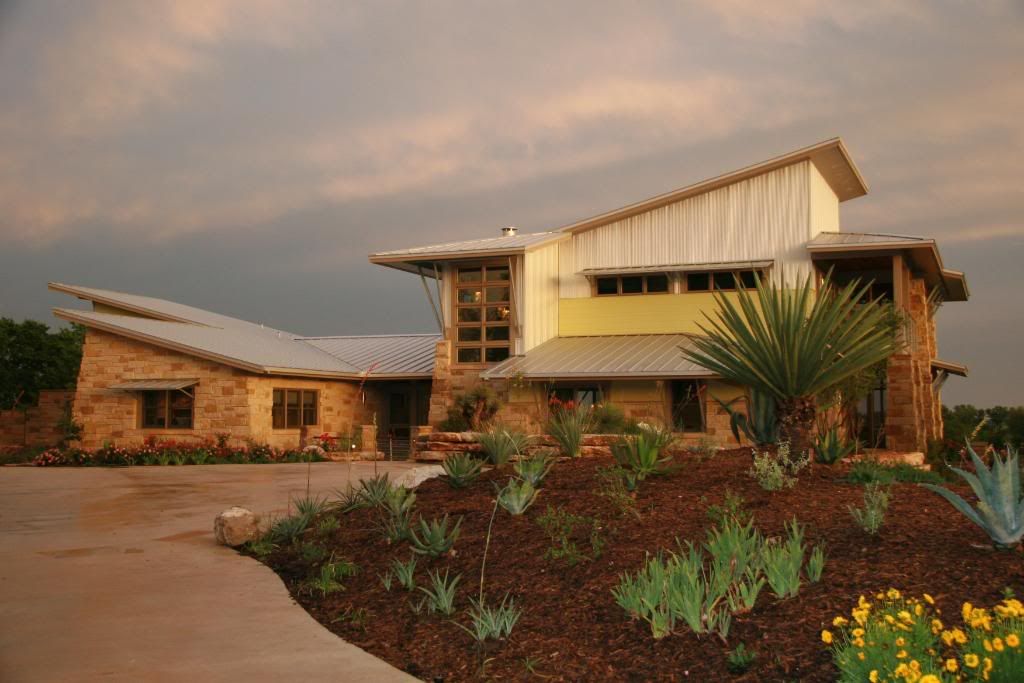
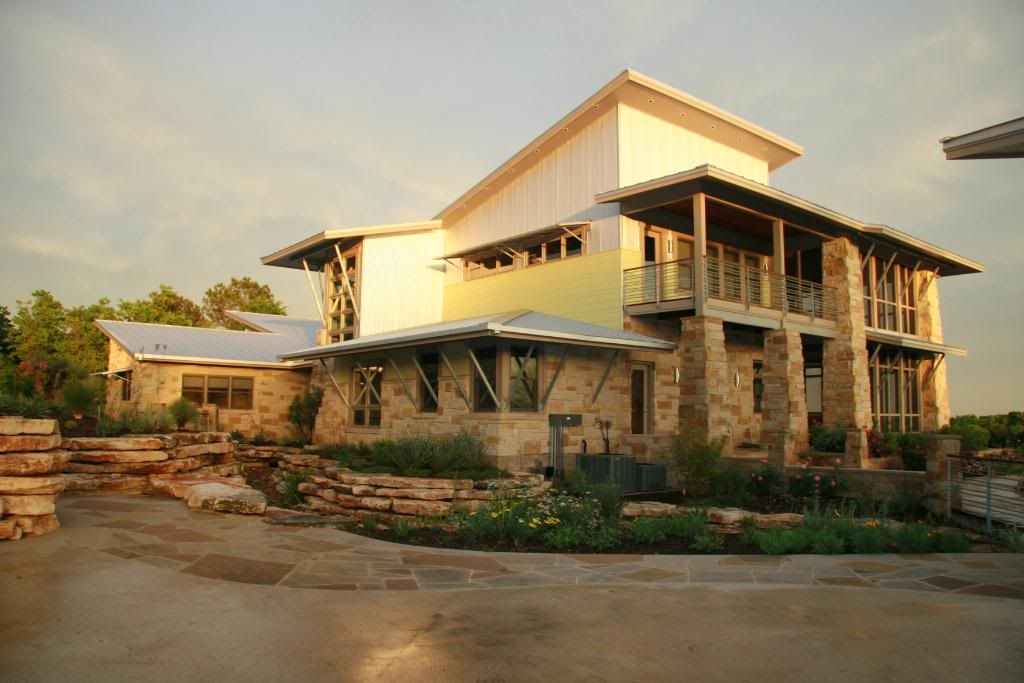
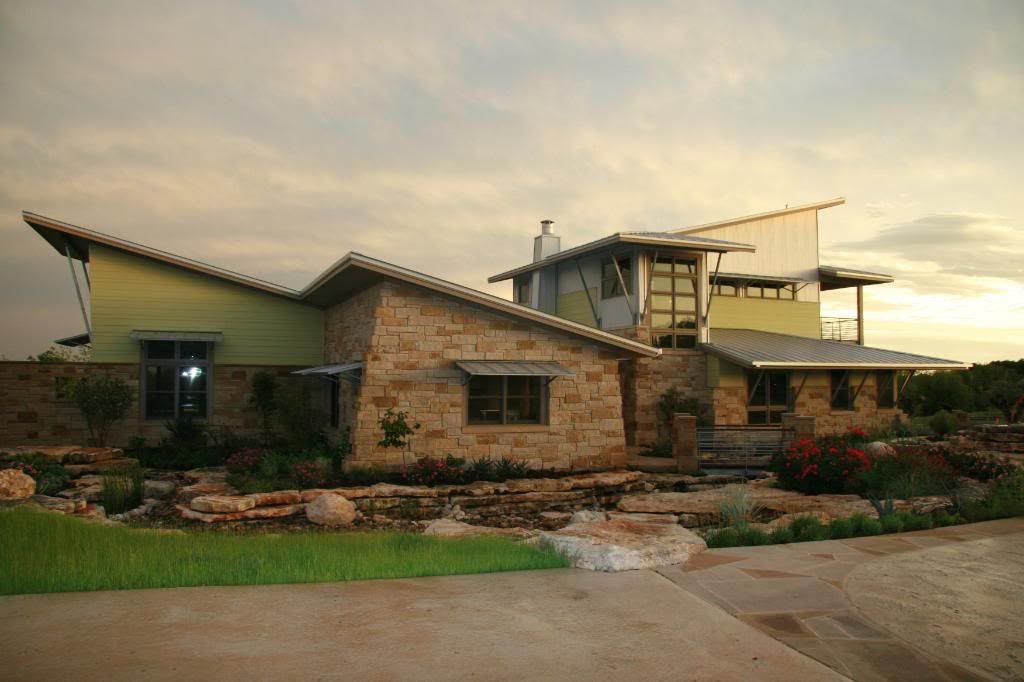
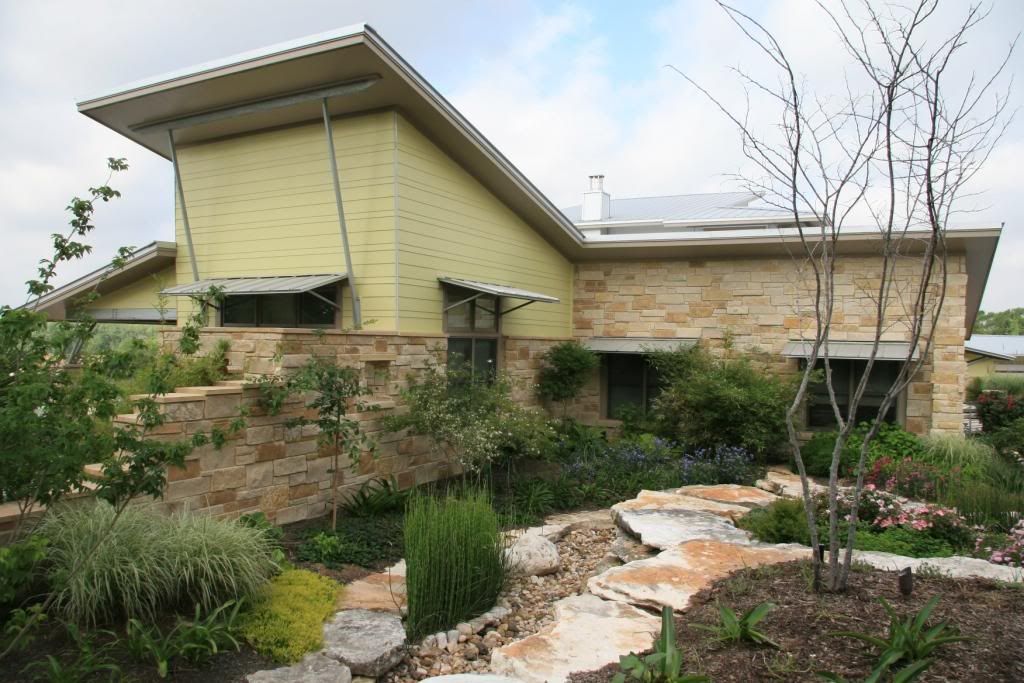

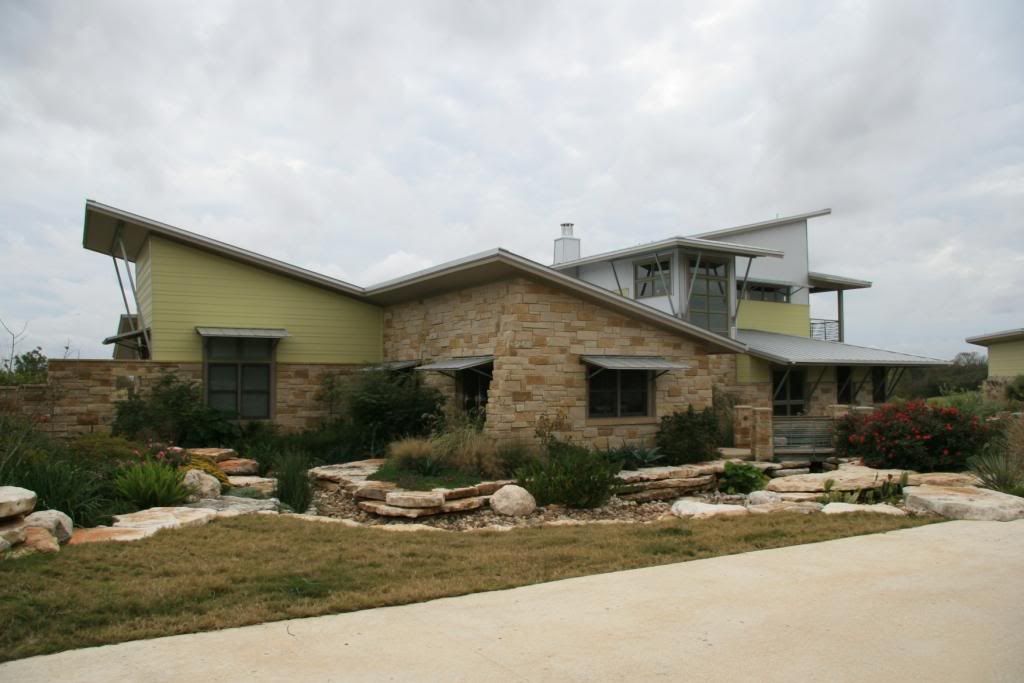
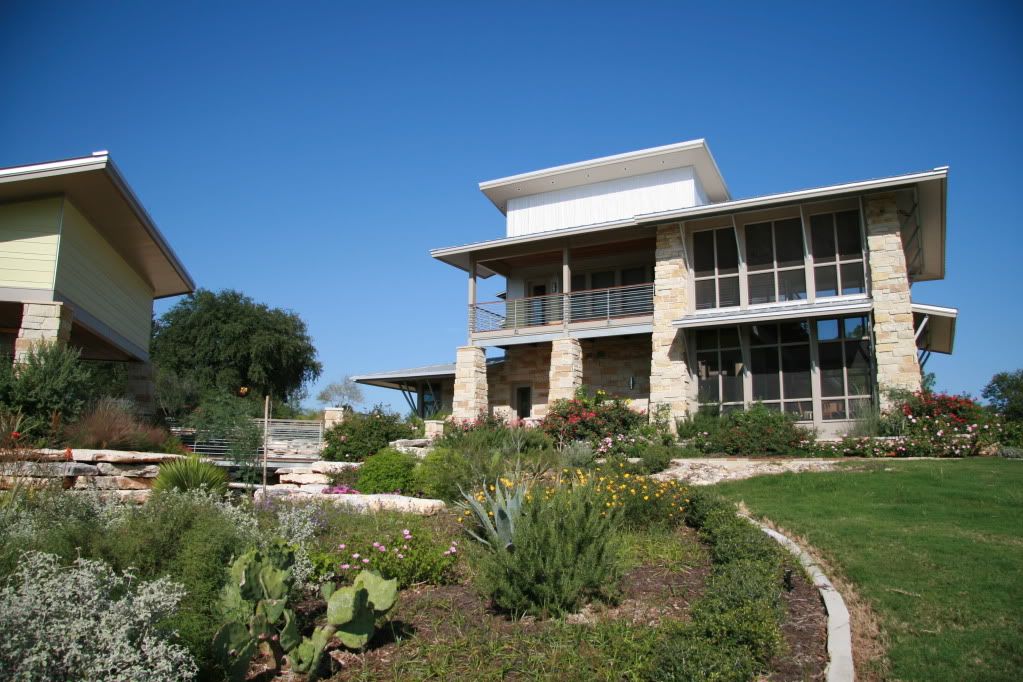
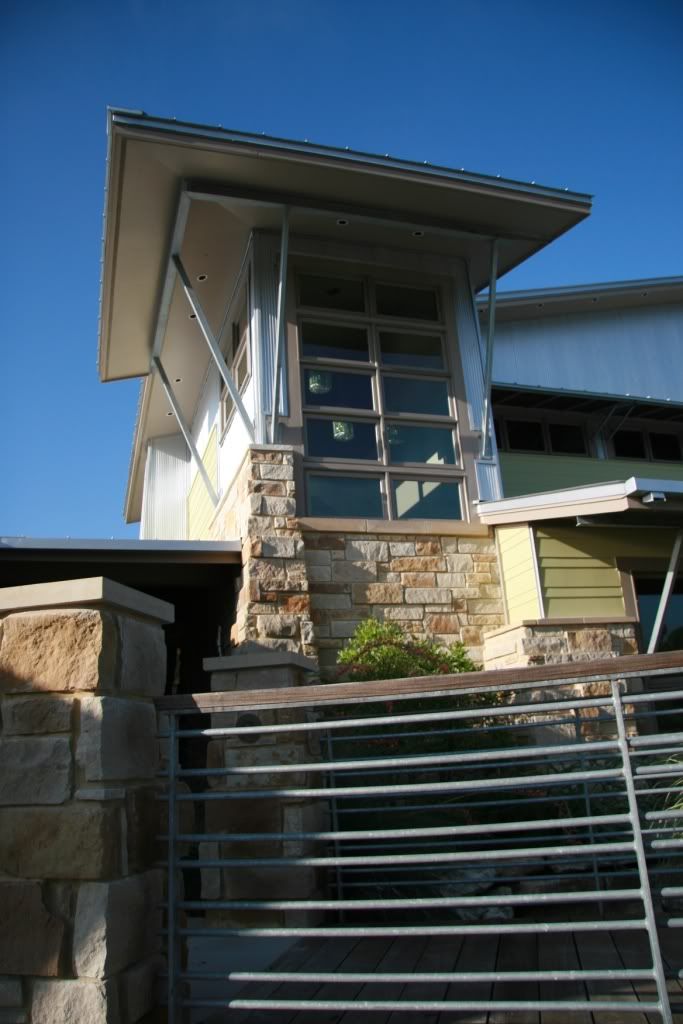
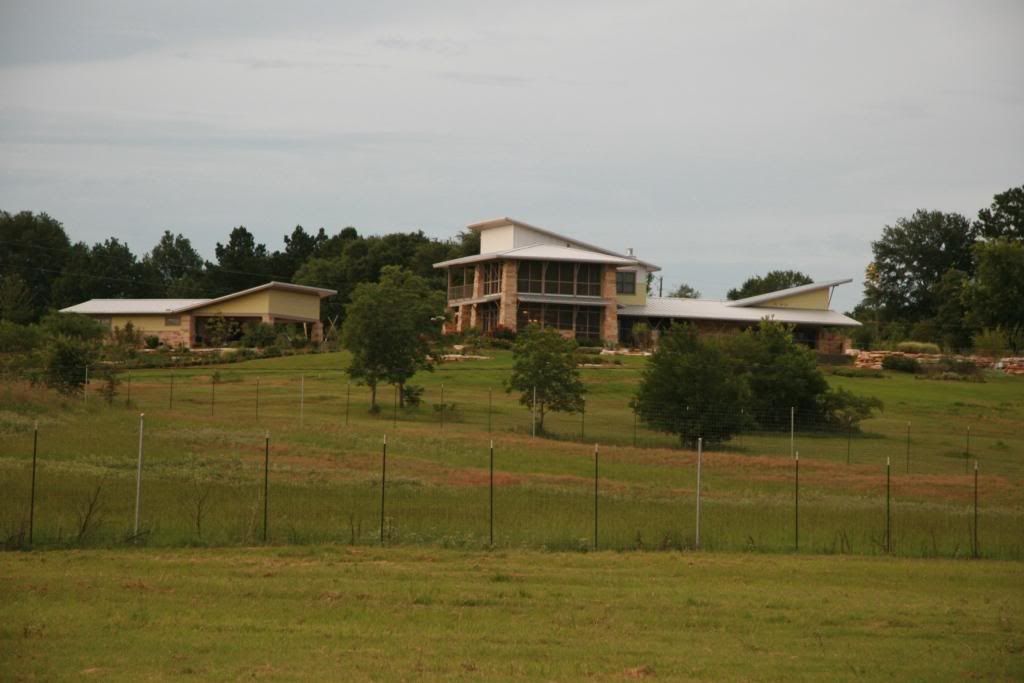
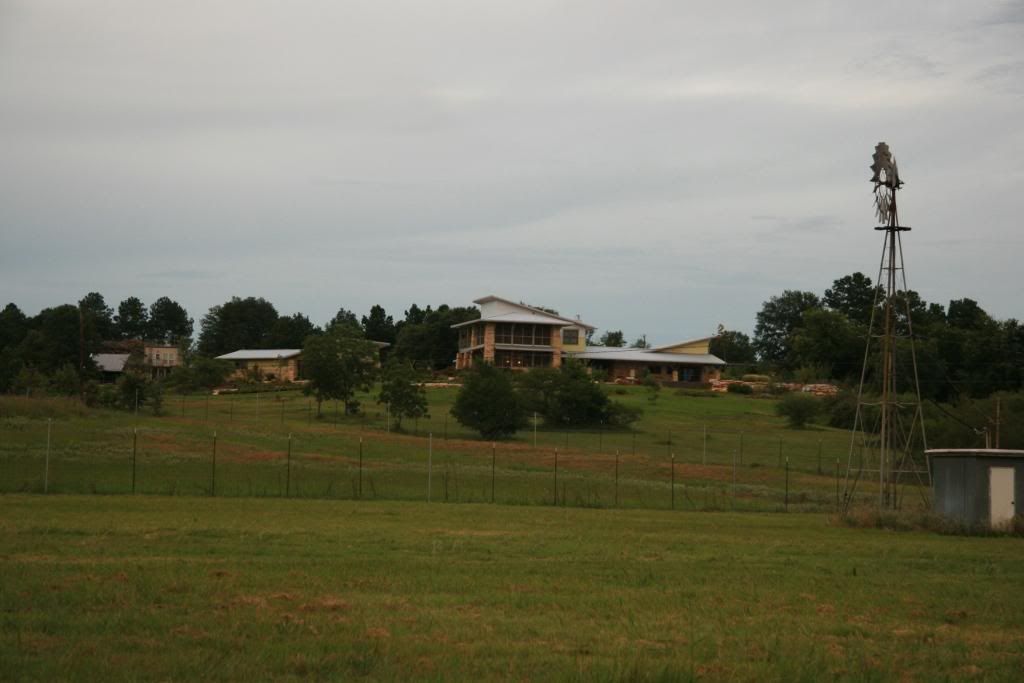
Sunrise from the porch:
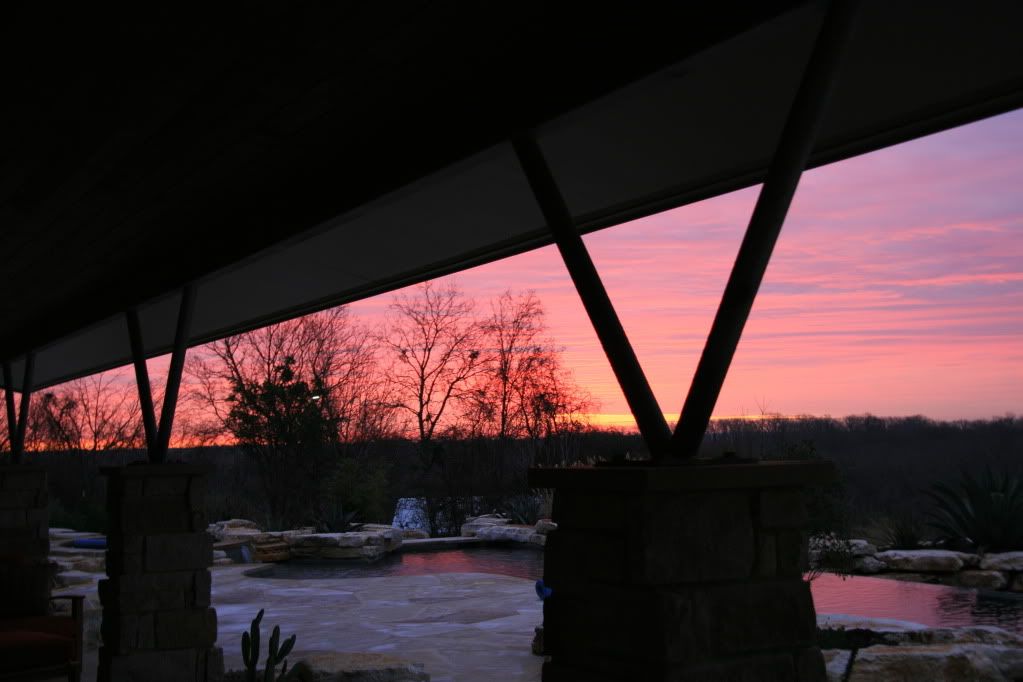
View from West Porch to my MAROON barn:
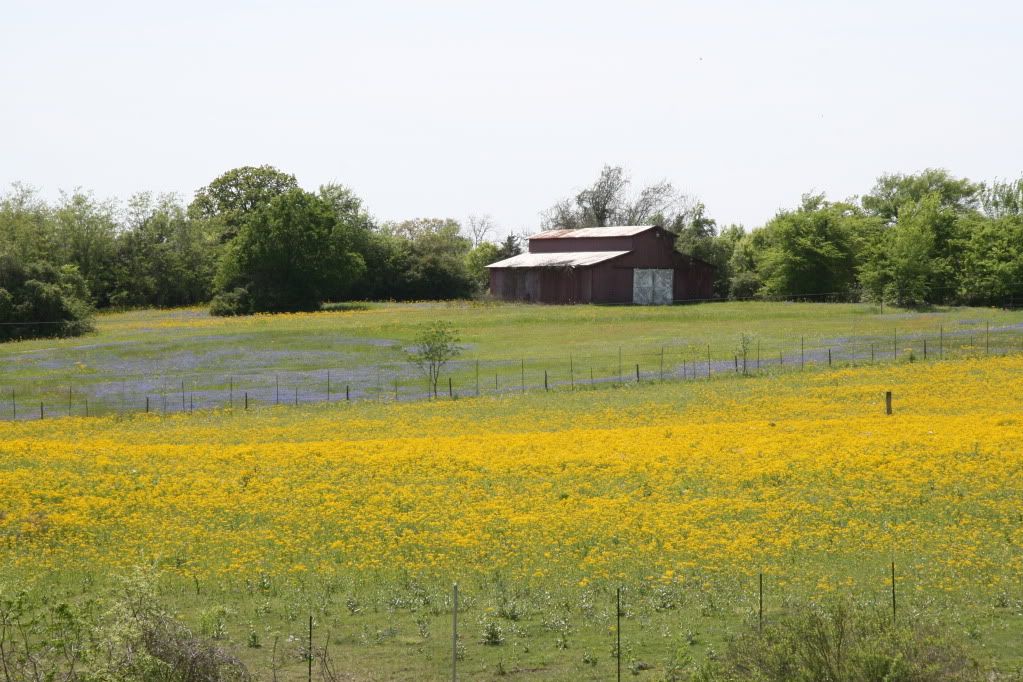
[This message has been edited by Yuccadoo (edited 6/30/2010 4:17p).]
The Pool (at sunset in winter in the first shot):



House:










Sunrise from the porch:

View from West Porch to my MAROON barn:

[This message has been edited by Yuccadoo (edited 6/30/2010 4:17p).]
these pictures are amazing
That place looks amazing. I'm envious.
Not your typical house, but beautiful nonetheless.
How much work is it to maintain all that bedding. Looks like many of them are low maint. type plants, but still, it probably takes some work to keep everything else out of them.
How much work is it to maintain all that bedding. Looks like many of them are low maint. type plants, but still, it probably takes some work to keep everything else out of them.
Nut sedge is the biggest enemy. Rabbits, armadillos, etc. like to eat specimen plants, too. It takes a crew of 3 about 1.5 days/month to maintain fully for about 6 months out of the year. It will get better with time....it is only 18 months old.
Also, I only showed maybe 1/3 of the gardens....the ones near the house. Several driveway beds, elevated gardens, and separate pear shaped beds away from the house. I also planted a 3 acre bald cypress stand, and have about 5 acres consisting of a large variety of native trees, all planted over the past 30 years.
When I bought the original acreage in 1978, it had 2 trees on it. I even moved some trees from my parents house in CS (ones I planted when I was about 15 years old) and replanted them on my place, as a legacy to where I grew up and the memory of their lives.
[This message has been edited by Yuccadoo (edited 6/30/2010 8:44p).]
Also, I only showed maybe 1/3 of the gardens....the ones near the house. Several driveway beds, elevated gardens, and separate pear shaped beds away from the house. I also planted a 3 acre bald cypress stand, and have about 5 acres consisting of a large variety of native trees, all planted over the past 30 years.
When I bought the original acreage in 1978, it had 2 trees on it. I even moved some trees from my parents house in CS (ones I planted when I was about 15 years old) and replanted them on my place, as a legacy to where I grew up and the memory of their lives.
[This message has been edited by Yuccadoo (edited 6/30/2010 8:44p).]
That's amazing. Props to you for the conservation and preservation efforts.
Quick Q: what is the grass or plant that looks like asparagus in this photo? About the middle of the picture, growing out of the "streambed"...


Man that is truely beautiful. You have done a hell of a job there. Color me green with envy.
Looks like horsetail.
I may have missed it, but is your house w/ pool in the CS area?
I may have missed it, but is your house w/ pool in the CS area?
Good call, Log; here is the scoop on horsetail:
Long ago, it was eaten by dinosaurs. Today, it is an ingredient in medications that lower cholesterol. Throughout human history, it has been used for scrubbing kitchen utensils.
Known commonly as the horsetail or scouring rush, this plant has emerged as one of the species that is increasingly recommended by garden designers in search of high concept or minimalist designs. These are designs that utilize plants for their shapes, architectural lines, foliage color, and durability, rather than their flowering characteristics.
Horsetail consists of many reed-like, segmented green tubes that grow straight up to a height of four feet. Attractive black and gray bands are found at both ends of each segment. It is often planted in long, narrow planters and makes a strong design statement. It does best in half day sun to light shade. In full sun it turns yellow-green which means that it will appear yellow-green as opposed to the emerald green color which it shows when sun protected.
Horsetail thrives where water is plentiful but it will grow well enough with a single weekly watering. It is the ideal plant for naturalizing -- which is a polite word for "taking over" -- an area. It spreads by underground fleshy stems called rhizomes; rhizomes are found on many plants, from irises to agapanthus, from ferns to Bermuda grass. If you have a moderately shady area with heavy, poorly drained soil where nothing will grow, you should consider planting horsetail. It is impervious to cold and grows wild as far north as Canada. Just don't plant it with ferns, azaleas or, for that matter, any other plants since the horsetail will surely, within a few years, engulf them all.
It is thought that giant horsetail trees, reaching a height of more than ten feet, lived at the time of the dinosaurs and were grazed by vegetarian dinosaur species. The garden variety of horsetail -- Equisetum hyemale -- has accompanied human beings in all their wanderings on account of its abrasive and medicinal properties. No plant is more concentrated in silica than horsetail. It was used by the pioneers for scouring their pots and polishing their pewter. Even today, campers looking for a way to clean their cooking utensils grab fistfuls of horsetail, which is often found growing next to streams, to do the job. The silica in horsetail is highly soluble in the fluids of wounds and has been using to stop bleeding and heal broken bones. Horsetail extract is also found in herbal products that are recommended for people suffering from incontinence or high cholesterol.
One of the most popular landscape designs for water thirsty climates incorporates fountain shaped plants with low water requirements. The idea is to suggest a vista of spouting fountains as a counterpoint to dry surroundings. Such fountainesque plants include: fortnight lily (Dietes vegeta), flowering on an off throughout the year in full sun; New Zealand flax (Phormium tenax), with spear shaped leaves in green, bronze, or purple, for full to partial sun; Juncus patens (California gray bush), a rush like arching plant with brown-banded leaves, for partial sun or shade; and ornamental grasses for full or partial sun such as purple fountain grass (Pennisetum setaceaum 'Cupreum'), which has purple leaves with wheat-like inflorescences, and sheep fescue (Festuca ovina 'Glauca', a small mounding plant with silvery-blue foliage. A landscape with such plants often includes a winding swath of smooth, gray stones, suggesting a dry stream bed or, in the symbolic Japanese mode, the movement of water.
In dry climates, necessity has become the mother of invention in garden design. With the continuing uncertainty about the availability and the price of water, many people are opting for drought tolerant landscapes which use only ten to twenty per cent of the water required by lawns. In the process, people are making a design statement by utilizing plants whose strong architectural lines and shapes -- as opposed to flowering capacity -- take center stage.
Read more: High Concept Horsetail | Garden Guides http://www.gardenguides.com/512-high-concept-horsetail.html#ixzz0sOm82SgM
[This message has been edited by Yuccadoo (edited 6/30/2010 10:45p).]
Long ago, it was eaten by dinosaurs. Today, it is an ingredient in medications that lower cholesterol. Throughout human history, it has been used for scrubbing kitchen utensils.
Known commonly as the horsetail or scouring rush, this plant has emerged as one of the species that is increasingly recommended by garden designers in search of high concept or minimalist designs. These are designs that utilize plants for their shapes, architectural lines, foliage color, and durability, rather than their flowering characteristics.
Horsetail consists of many reed-like, segmented green tubes that grow straight up to a height of four feet. Attractive black and gray bands are found at both ends of each segment. It is often planted in long, narrow planters and makes a strong design statement. It does best in half day sun to light shade. In full sun it turns yellow-green which means that it will appear yellow-green as opposed to the emerald green color which it shows when sun protected.
Horsetail thrives where water is plentiful but it will grow well enough with a single weekly watering. It is the ideal plant for naturalizing -- which is a polite word for "taking over" -- an area. It spreads by underground fleshy stems called rhizomes; rhizomes are found on many plants, from irises to agapanthus, from ferns to Bermuda grass. If you have a moderately shady area with heavy, poorly drained soil where nothing will grow, you should consider planting horsetail. It is impervious to cold and grows wild as far north as Canada. Just don't plant it with ferns, azaleas or, for that matter, any other plants since the horsetail will surely, within a few years, engulf them all.
It is thought that giant horsetail trees, reaching a height of more than ten feet, lived at the time of the dinosaurs and were grazed by vegetarian dinosaur species. The garden variety of horsetail -- Equisetum hyemale -- has accompanied human beings in all their wanderings on account of its abrasive and medicinal properties. No plant is more concentrated in silica than horsetail. It was used by the pioneers for scouring their pots and polishing their pewter. Even today, campers looking for a way to clean their cooking utensils grab fistfuls of horsetail, which is often found growing next to streams, to do the job. The silica in horsetail is highly soluble in the fluids of wounds and has been using to stop bleeding and heal broken bones. Horsetail extract is also found in herbal products that are recommended for people suffering from incontinence or high cholesterol.
One of the most popular landscape designs for water thirsty climates incorporates fountain shaped plants with low water requirements. The idea is to suggest a vista of spouting fountains as a counterpoint to dry surroundings. Such fountainesque plants include: fortnight lily (Dietes vegeta), flowering on an off throughout the year in full sun; New Zealand flax (Phormium tenax), with spear shaped leaves in green, bronze, or purple, for full to partial sun; Juncus patens (California gray bush), a rush like arching plant with brown-banded leaves, for partial sun or shade; and ornamental grasses for full or partial sun such as purple fountain grass (Pennisetum setaceaum 'Cupreum'), which has purple leaves with wheat-like inflorescences, and sheep fescue (Festuca ovina 'Glauca', a small mounding plant with silvery-blue foliage. A landscape with such plants often includes a winding swath of smooth, gray stones, suggesting a dry stream bed or, in the symbolic Japanese mode, the movement of water.
In dry climates, necessity has become the mother of invention in garden design. With the continuing uncertainty about the availability and the price of water, many people are opting for drought tolerant landscapes which use only ten to twenty per cent of the water required by lawns. In the process, people are making a design statement by utilizing plants whose strong architectural lines and shapes -- as opposed to flowering capacity -- take center stage.
Read more: High Concept Horsetail | Garden Guides http://www.gardenguides.com/512-high-concept-horsetail.html#ixzz0sOm82SgM
[This message has been edited by Yuccadoo (edited 6/30/2010 10:45p).]
Yuccadoo- outstanding stuff. That's a pretty freakin' cool house and gardens. I really dig the design of it all.
Thanks, Finn.....the achievement of a life long dream and about 5 years of work with architects and 2 years to build. We are really enjoying the place!
Back to the dog run, though:
Well, we demolished the front porch Thursday (it was rotten, but the supports were still good) and started bringing in materials for the remodel Friday morning before the little bit of rain we got. I should have some pictures next week as the job progresses. I need to trim some large tree limbs off the roof, too, and I have not quite figured out how to do that safely.
[This message has been edited by Yuccadoo (edited 7/3/2010 11:16a).]
Back to the dog run, though:
Well, we demolished the front porch Thursday (it was rotten, but the supports were still good) and started bringing in materials for the remodel Friday morning before the little bit of rain we got. I should have some pictures next week as the job progresses. I need to trim some large tree limbs off the roof, too, and I have not quite figured out how to do that safely.
[This message has been edited by Yuccadoo (edited 7/3/2010 11:16a).]
Very Nice!
I asume you mean safely because you don't trust the structure. There is a forklift / cherry picker machine just slightly larger than a good sized bobcat (can't remember the correct name) that would be ideal. With the terain and height of the building it will be ideal for future reno work on the structure as well. See them all the time on my jobs sites and are the best way to swing palms into place.
My undergrad is Landscape Architecture with a minor in Horticulture and I must say, your place is amazing! Some day... I can only dream.
“A doctor can bury his mistakes but an architect can only advise his clients to plant vines.” F.L.W.
I asume you mean safely because you don't trust the structure. There is a forklift / cherry picker machine just slightly larger than a good sized bobcat (can't remember the correct name) that would be ideal. With the terain and height of the building it will be ideal for future reno work on the structure as well. See them all the time on my jobs sites and are the best way to swing palms into place.
My undergrad is Landscape Architecture with a minor in Horticulture and I must say, your place is amazing! Some day... I can only dream.
“A doctor can bury his mistakes but an architect can only advise his clients to plant vines.” F.L.W.
We will be expecting an invitation to the open house once the restoration is complete
Couple of pics as we get started. Last weeks demo of porch, which was to far gone to repair, was met today with a new front porch in treated lumber. We cut back the posts to good wood as they were deteriated on top, added additional cross joisting to regain the corrected height to instal 2" nominal decking in treated wood. Siding demo tomorrow with insulation and new siding to start after wrapping with modern vapor barrier.

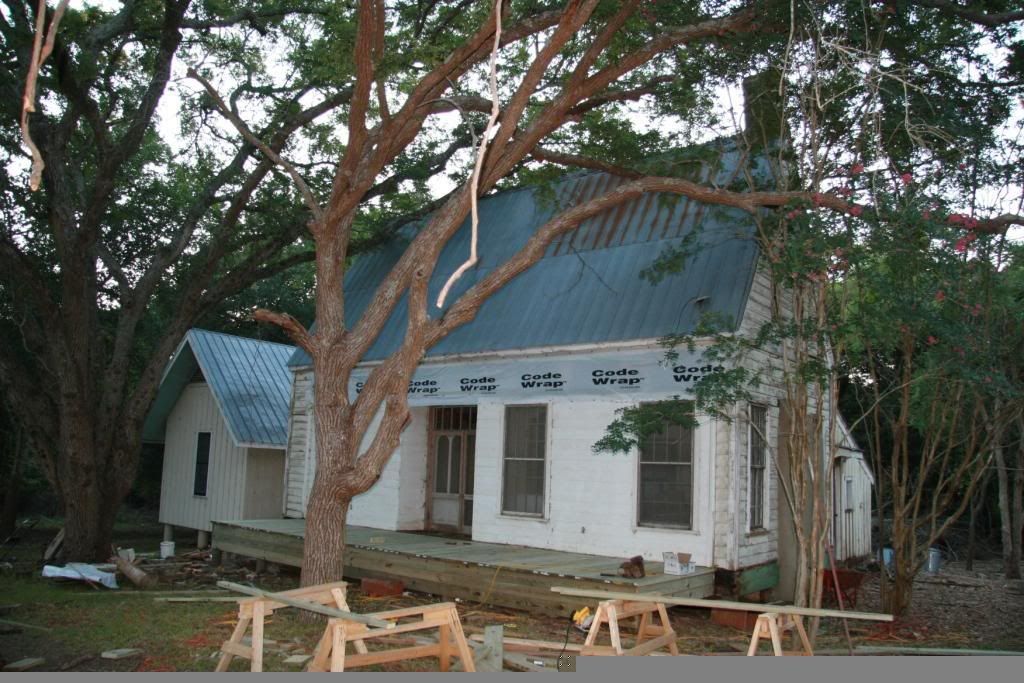


Water Turkey:
Sure...why not! We are a ways off, though. The inside will take some time, but it is in pretty good shape.
I am meeting the roofing contractor tomorrow to get the low down on replacing the bad roofing panels using the exact same panels....he is pretty sure he can get it, as am I. I will be shopping to see if I can find the replacement ridge trim that was on the house.....that may not be easy to find.
Sure...why not! We are a ways off, though. The inside will take some time, but it is in pretty good shape.
I am meeting the roofing contractor tomorrow to get the low down on replacing the bad roofing panels using the exact same panels....he is pretty sure he can get it, as am I. I will be shopping to see if I can find the replacement ridge trim that was on the house.....that may not be easy to find.
How much of the exterior are you taking off? I can see the part you've got wrapped right now, but the part just below it looks different than the siding on the rest of the structure.
nm
[This message has been edited by Ham Slice MRE (edited 7/6/2010 5:22p).]
[This message has been edited by Ham Slice MRE (edited 7/6/2010 5:22p).]
You know, a lot of those old houses survived intact because they could "breathe"... I've debated on whether putting any moisture barrier in my old house would be detrimental or not. I don't know, but it has survived since 1890 as-is with little damage.
Those houses and gardens were pretty impressive. I hope in the first new home that the bottom floor is all-masonry construction and something that is easily hosed out based on the proximity to a large native pecan tree.
Those houses and gardens were pretty impressive. I hope in the first new home that the bottom floor is all-masonry construction and something that is easily hosed out based on the proximity to a large native pecan tree.
The resto continues/update:



The other house is far enough away from the Pecan that I it cannot fall on it, but I hear what you're sayin'.....
If you are referring to the proximity to the river, it is about 5' above the 100 yr flood plain. The 90'-91' flood waters didn't get within 100' of that house and was still about 4' below it vertically.
[This message has been edited by Yuccadoo (edited 7/8/2010 5:24p).]



The other house is far enough away from the Pecan that I it cannot fall on it, but I hear what you're sayin'.....
If you are referring to the proximity to the river, it is about 5' above the 100 yr flood plain. The 90'-91' flood waters didn't get within 100' of that house and was still about 4' below it vertically.
[This message has been edited by Yuccadoo (edited 7/8/2010 5:24p).]
wow, you aren't messing around, looks good
And the remodeling beat goes on:

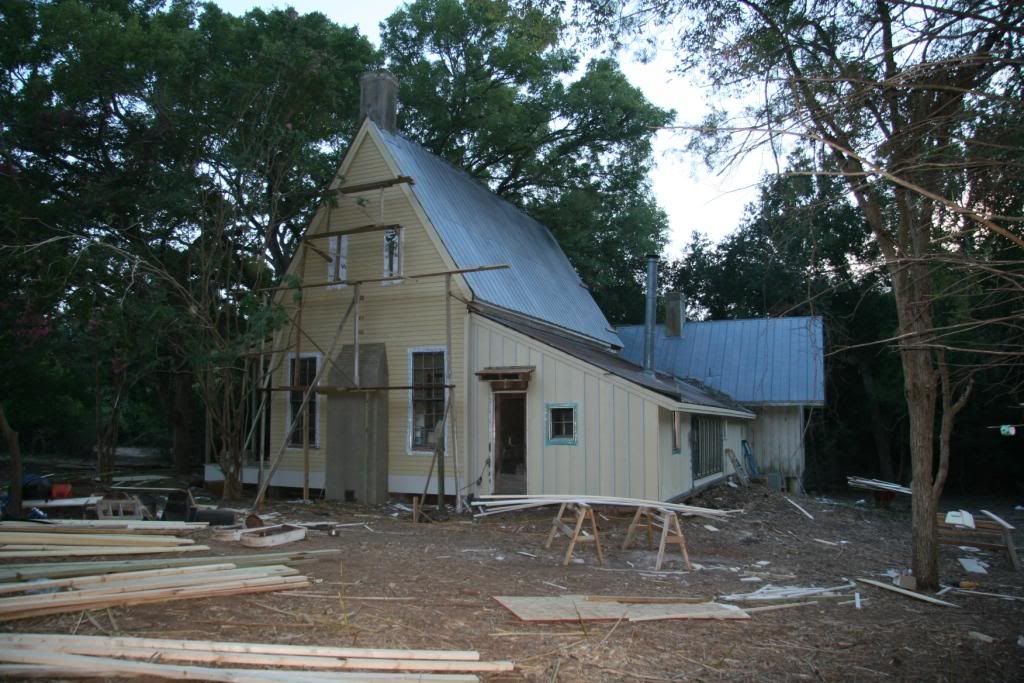


Looking good.
Thanks...we are just getting started!
Astonishing!
this is flat out amazing.
How many acres do you have? Is it all connected, meaning is your primary residence on the same piece of land as the other two houses?
How many acres do you have? Is it all connected, meaning is your primary residence on the same piece of land as the other two houses?
Got the tree limbs off the roof, skinned back about 1/2 of the metal roofing, and put up radiant barrier sheathing and subsequent roofing moist barrier. Long day, thus the flash needed for pictures as work was completed:






Gigemags05
GigemAgs posted 10:11a, 07/10/10
About 58 acres are contiguous with my primary residence, and include one house renovation seen in my second post...the one next to the River with that hideous BURNT ORANGE paint job. Another 51 are together about a mile away that includes the dog run house above.
[This message has been edited by Yuccadoo (edited 7/12/2010 9:00p).]
[This message has been edited by Yuccadoo (edited 7/12/2010 9:03p).]
GigemAgs posted 10:11a, 07/10/10
quote:
this is flat out amazing.
How many acres do you have? Is it all connected, meaning is your primary residence on the same piece of land as the other two houses?
About 58 acres are contiguous with my primary residence, and include one house renovation seen in my second post...the one next to the River with that hideous BURNT ORANGE paint job. Another 51 are together about a mile away that includes the dog run house above.
[This message has been edited by Yuccadoo (edited 7/12/2010 9:00p).]
[This message has been edited by Yuccadoo (edited 7/12/2010 9:03p).]
Righteous project man.
Is this considered your job? Flipping properties like this? Or are you retired and able to do this full time?
Thanks for keeping us updated.
Thanks for keeping us updated.
BCSRealtor, he answered that earlier in this thread, he's retired... this is just a hobby.
How difficult was it working on a roof that steep? Looks like a heck of a job.
How difficult was it working on a roof that steep? Looks like a heck of a job.
Featured Stories
See All
12:20
11h ago
6.0k
27:26
12h ago
6.9k
30:14
6h ago
781
Pick 'Em & Rip 'Em sponsored by PrizePicks: Week 20
by Matthew Dawson
58:10
9h ago
1.2k
FTM, Ep. 71: Entering a 'post-NIL' world, creative collaborations & more
by FollowTheMoney
Texas A&M adds former Houston WR Jonah Wilson via transfer portal
by Cade Draughon
tomato3938
Press Conference: Taylor & Co. return to Reed on Thursday vs. Georgia
in Texas A&M Women's Basketball
1
aggiedrjdub
Press Conference: Taylor & Co. return to Reed on Thursday vs. Georgia
in Texas A&M Women's Basketball
1

